In April 2022, Capella Space introduced three new analytics products (Change Detection, Vessel Detection and Global Change Monitoring) within its self-serve satellite tasking Console, enabling customers to automatically pull insights from Capella’s high-resolution Synthetic Aperture Radar (SAR) imagery. Since introducing those products, customers worldwide have been able to gain critical insights with Capella’s technology across an array of challenges. In this two-part blog, we’ll do a deep dive on Capella’s change detection offering, which uses statistical analysis to detect and highlight changes between pairs of images.
Based in the U.S., Capella Space is the first and only American SAR company to bring critical data back to Earth, helping humanity obtain a clear and accurate picture of the planet. Capella offers the highest quality SAR imagery on the market, enabling customers to make more informed decisions about commerce, conservation, and security on Earth. SAR imagery has a unique advantage over other common remote sensing technologies in that it can capture imagery day or night, regardless of weather or cloud cover. As commercial SAR imagery becomes increasingly available, specialized data analysis makes this data more useful and accessible to governments, research institutions, and companies around the world.
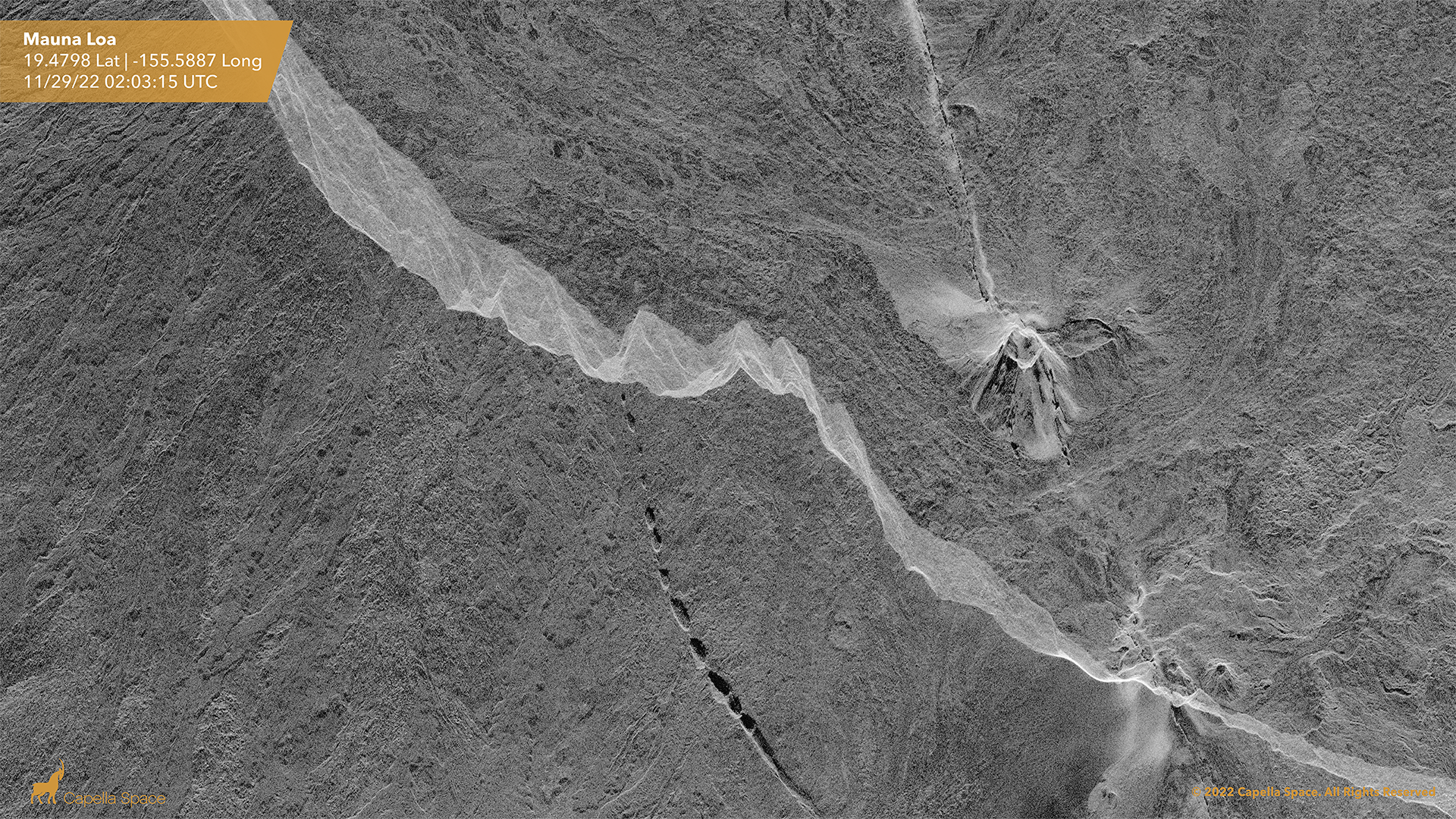
In the first part of this blog series, we’ll describe how Capella simplifies image acquisition for change detection. Time-series analysis typically suffers from poor-quality inputs (the garbage in, garbage out problem). Capella has mitigated this with its industry-leading, high-quality imagery along with its mission awareness and repeat tasking modules—core requirements for optimal results. By automating critical steps, the previously tedious process of manually scheduling and requesting compatible time-series images is eliminated.
In the second installment of this blog, we’ll analyze some examples of interesting changes in specific geographic locations. Whether a user is a SAR expert or a SAR novice, automated change detection helps users identify not only the larger changes, but also small differences that would be easily missed with just visual analysis alone. For those unfamiliar with SAR or those that specialize in another remote sensing modality, the automation of change detection allows users to take advantage of a classic SAR workflow without specialized software or expertise. With five times the image capacity of any other commercial SAR imagery provider, Capella’s automated processing enables image analysts and SAR scientists to rapidly evaluate large quantities of imagery. Change detection empowers analysts and decision-makers to identify new activity across strategic locations, revealing new construction, land use changes, unauthorized activity, movement of key equipment and material, and patterns of life.
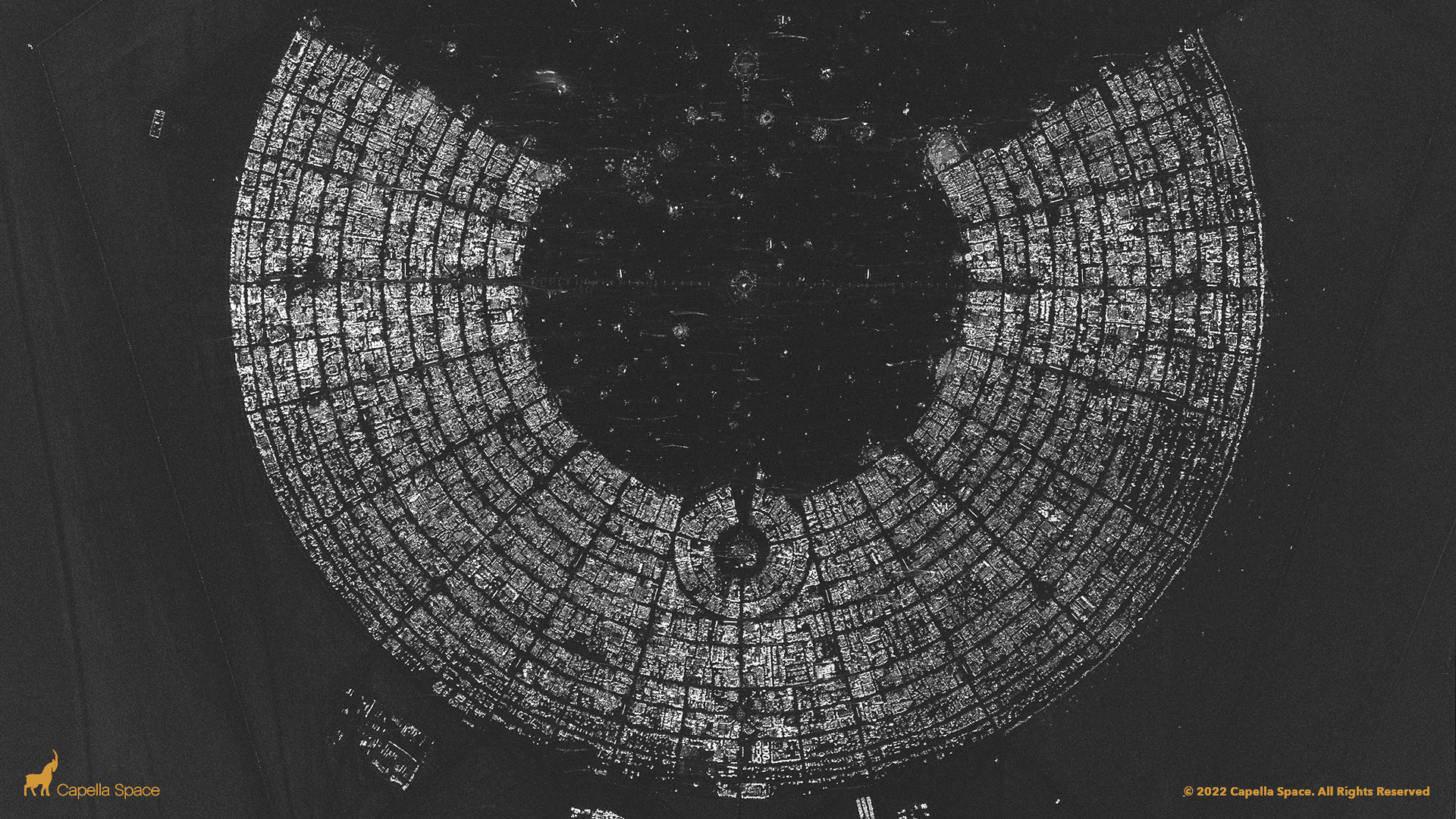
Seamless time-series image acquisition and viewing
Acquiring a time-series of remotely sensed imagery over an area and time of interest is typically incredibly difficult. Historically, monitoring has been unreliable due to cloud cover, haze, and other atmospheric impacts. With Capella’s SAR technology, users can acquire data for reliable time-series analyses regardless of weather conditions. While SAR solves the atmospheric (and solar illumination) issues, all remote sensing modalities—including SAR—can suffer from image distortions due to topographic effects and the differing orientations of objects in the scene with respect to the sensor. These effects, if unmitigated, make it difficult for analysts to accurately identify change. The quality of change detection solutions from any Earth observation data provider can suffer greatly if satellite tasking and image capture are not well executed.
Capella’s tasking, scheduling, and data access teams have developed unique tools that allow for seamless acquisition of time-series imagery compatible for use with change detection. In the past, acquiring compatible imagery has been a consistent challenge for mission managers, requiring considerable intervention from experts and satellite operators. This challenge slows the pace of information gathering. With mission awareness, a user on the Capella Console can view upcoming pass characteristics and timing to select how and when they would like to image their area of interest. With repeat tasking, the user can schedule their time-series of images to be acquired at a cadence and duration that are relevant for the problem they want to solve. This enables each acquisition to have the same scene footprint and acquisition geometry. A simple drop-down menu allows users to easily select the amplitude change detection analytic to be produced automatically as soon as the imagery is available. These core interfaces—also available through an API—enable a broader community to integrate change detection into workflows.
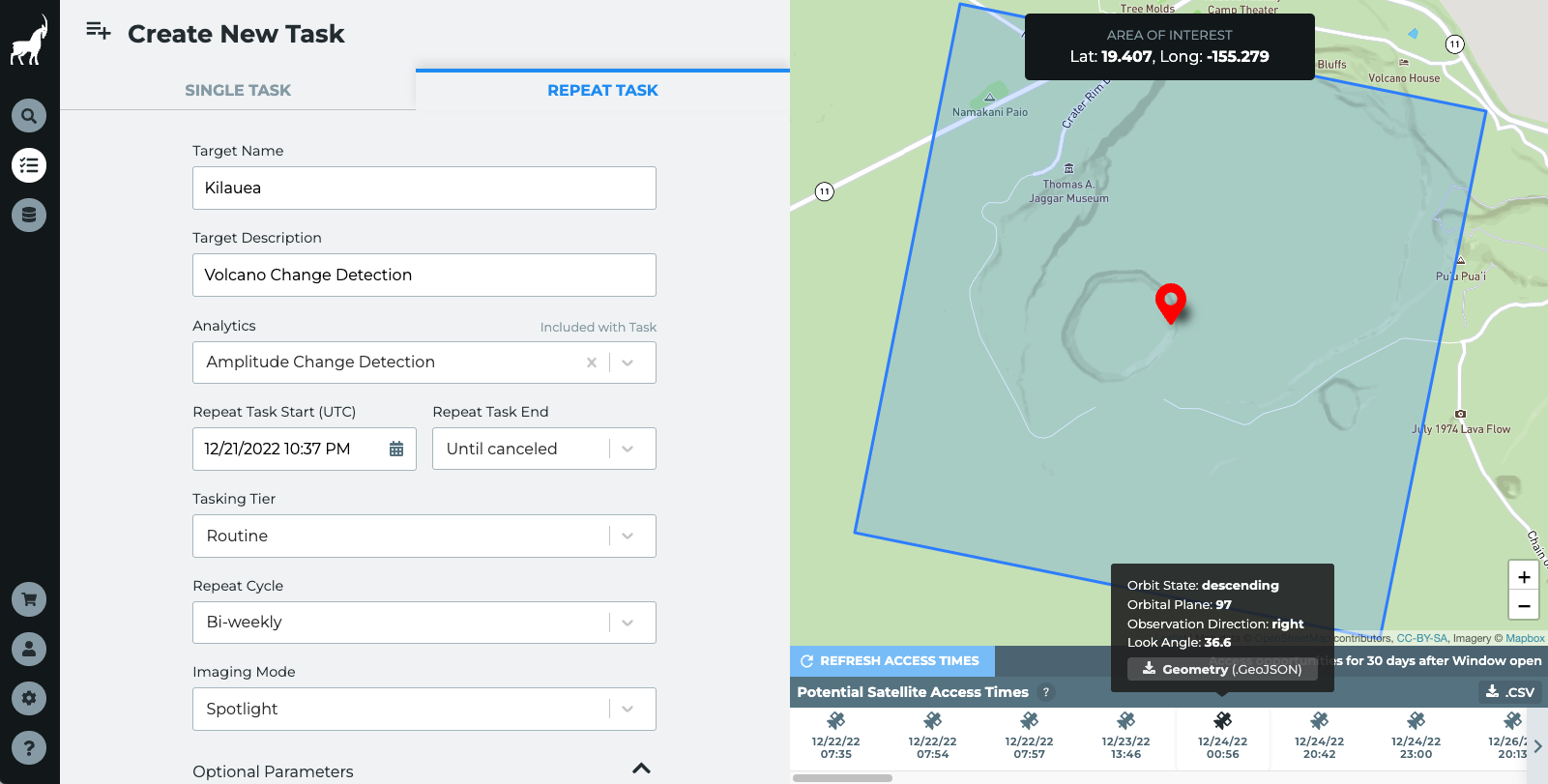
Once the second image of a time-series has been processed, Capella’s change detection products are automatically generated. The Capella Console, Analytics App, and API enable users to discover, visualize, order and download imagery and change detection layers without needing to interface with a customer service representative.
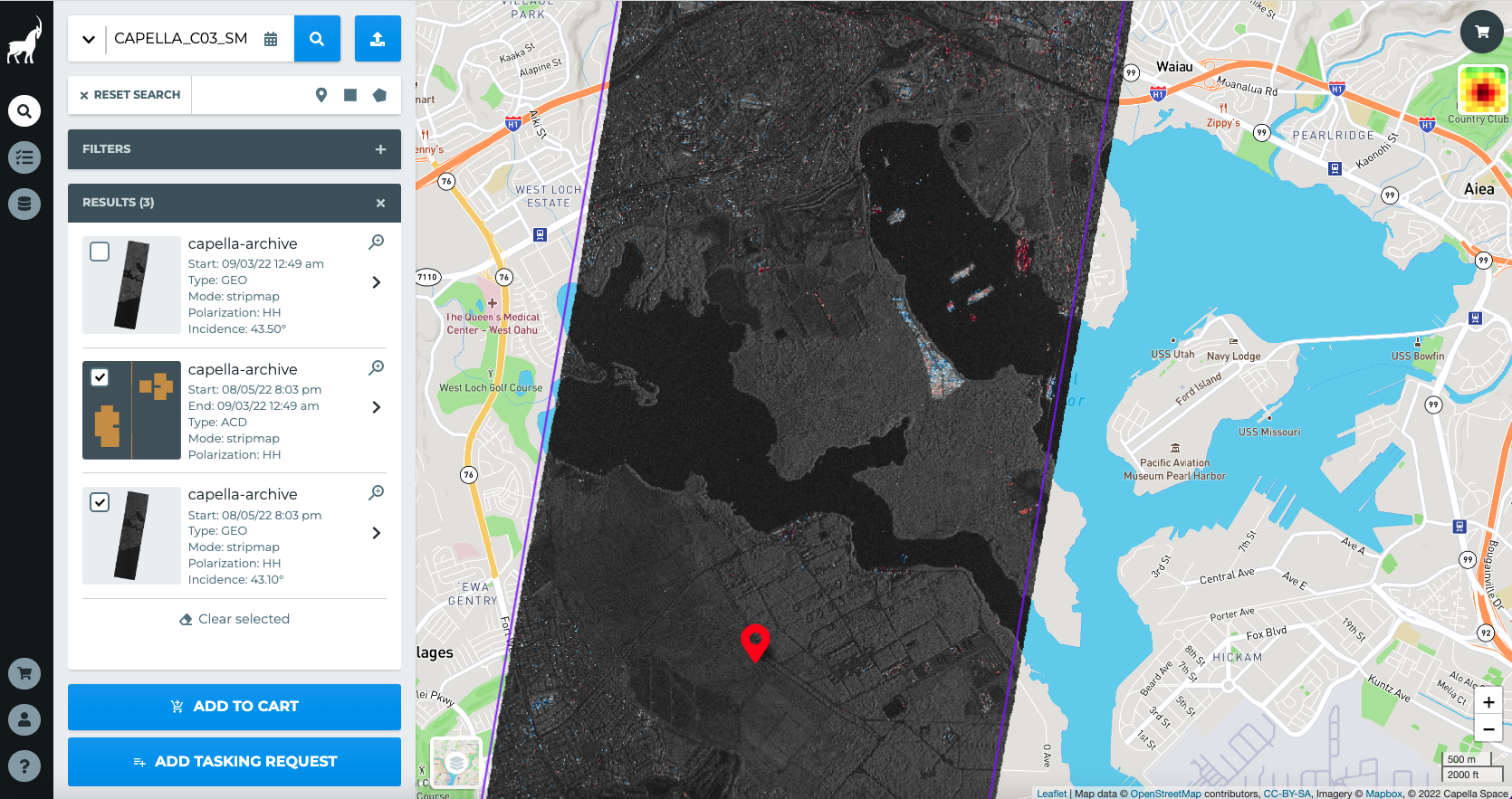
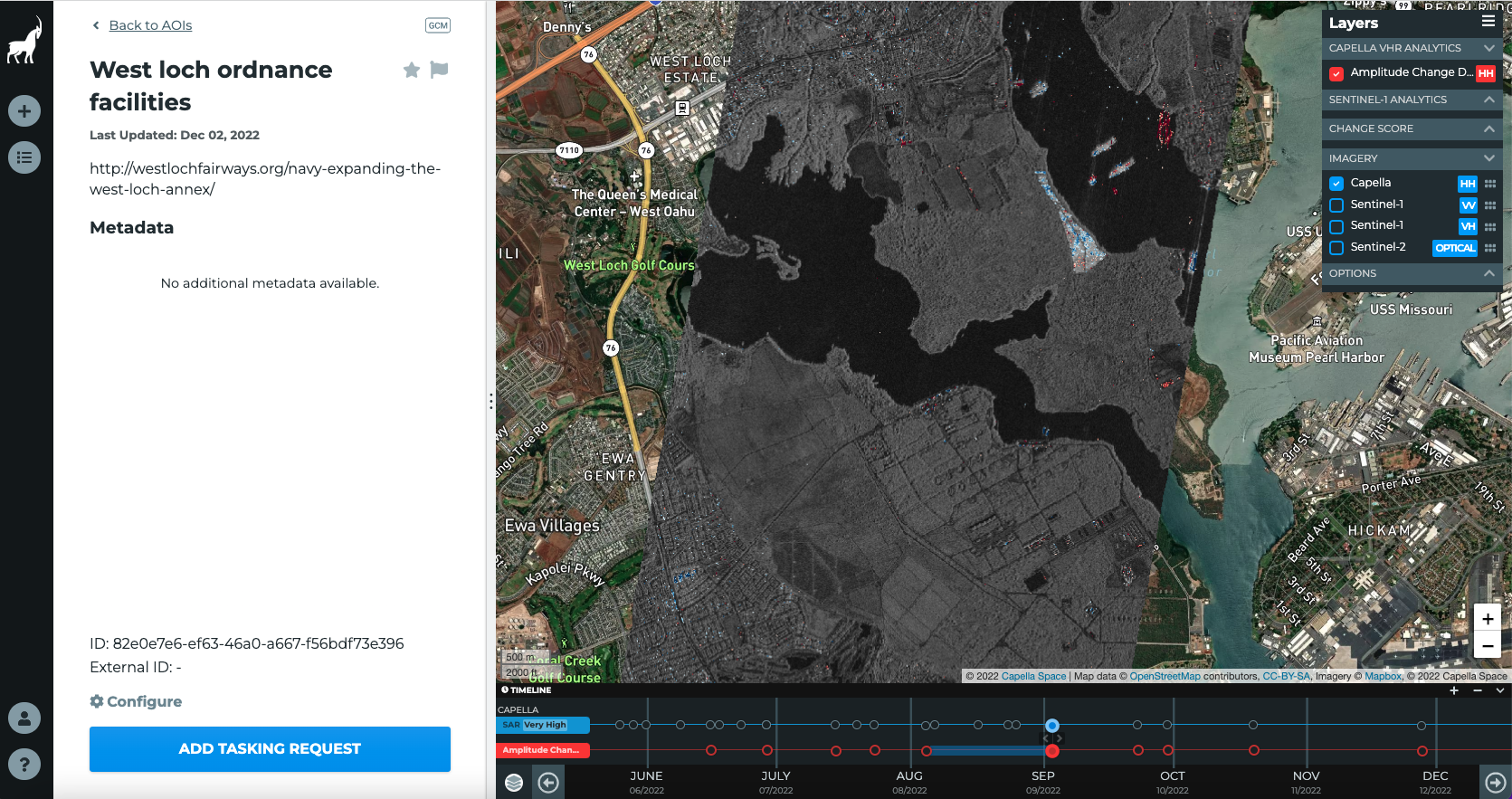
Join us soon for the next installment of this blog series where we will dive into observations from tasking and Change Detection analysis.
Learn more about Capella’s Analytics Solutions here.

